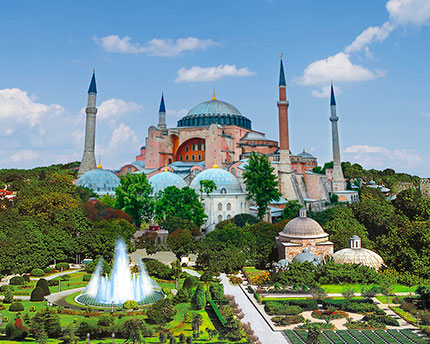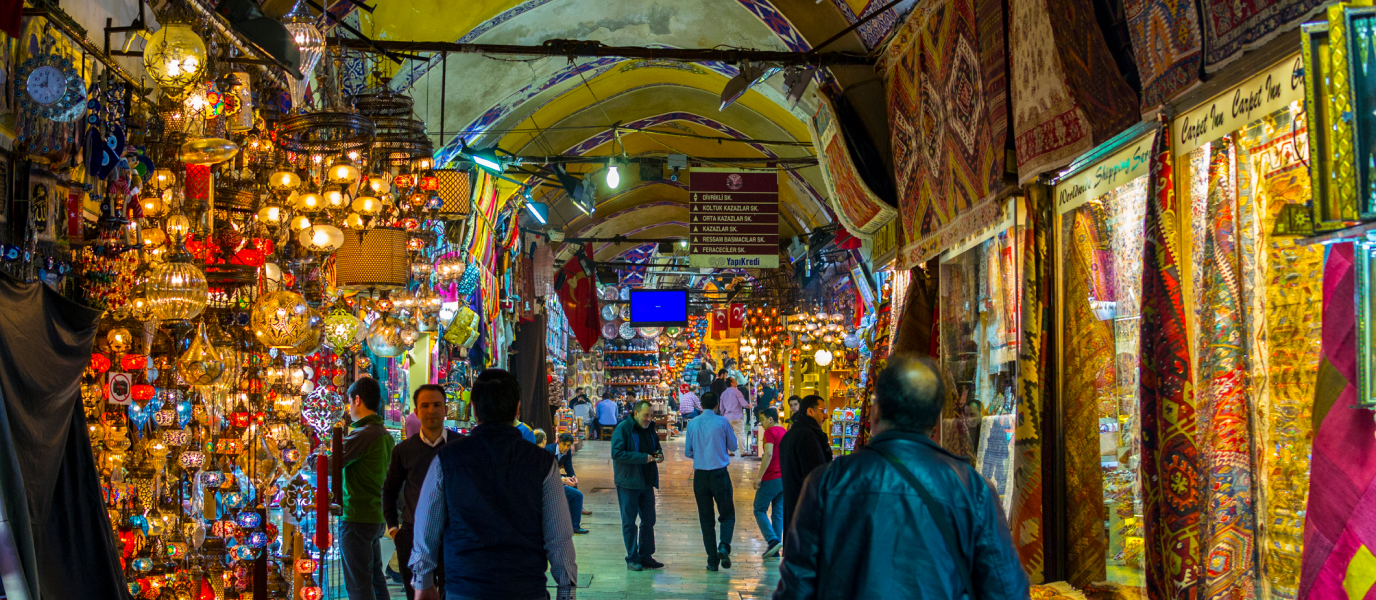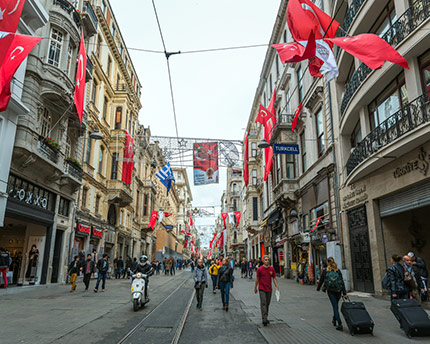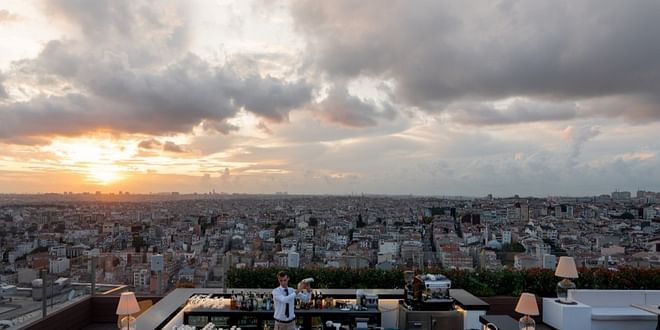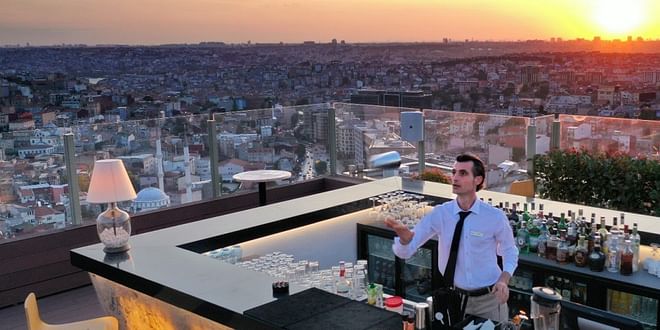In AD 537, when the Hagia Sophia Basilica was rebuilt for the last time, the greatest engineering achievement of Ancient Rome had almost equalled it. It was the Pantheon dome, a unique achievement at the time. The Hagia Sophia dome was still higher. There was so much space in the dome that, until the Seville dome was built one thousand years later, no other Christian cathedral was able to match it. It suffered fires and earthquakes and was ransacked by the Crusaders. It was protected by the Vikings and it was where the East-West Schism took place in which the Orthodox Church was created.
Not even in the worst of times of the Empire was Hagia Sophia neglected by its masters. That is why, after years of decadence, when the Muslim conquerors came across it, it was still radiant and shone between the death and fire of the looting. As they were impressed, they decided to maintain it and convert it into a mosque. Since then, they themselves have taken on the challenge to develop its architectural style and take it to the highest level. One thousand years later, the Blue Mosque (internal link) was built immediately opposite to prove that they had achieved this in many aspects.
The Hagia Sophia Basilica, a 1,000-year reign
The Hagia Sophia Basilica is a true survivor. Its construction was an architectural miracle and its history has not been less unique. Through its eventful history, it has suffered three large fires, five earthquakes, looting, riots, conquests, etc.
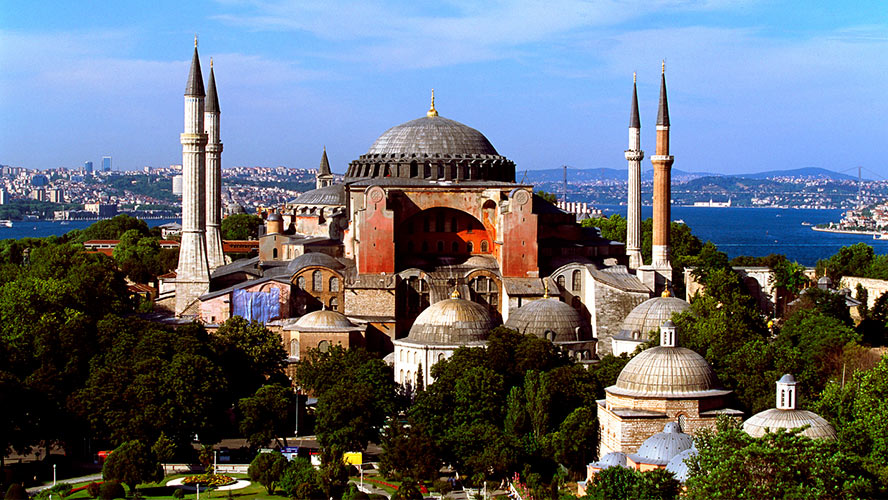
Constantine was the first emperor to order its construction in AD 360 but fire had devoured it by AD 404. Only 11 years afterwards, Theodosius II ordered a new construction but it was burned in AD 532 during the Nika riots, the worst in the 1,000-year history of the Byzantine Empire. The overexcited hooligans of the teams of the nearby hippodrome tried to take the Great Royal Palace of Justinian and, in view of their failure, they took it out on the Hagia Sophia.
In AD 537, five years after the riots, Justinian decided to end this major imperial desire by erecting the largest basilica in the world, with an inconceivable size at the time. Justinian, who had been successful in his military and intellectual conquests, also planned to beautify Byzantium, regaining the splendour of the Roman Empire from Constantinople.
It was the third time lucky: Justinian appointed Isidore of Miletus and Anthemius of Tralles, two outstanding architects at the time, for the final construction. Both completed the architectural achievements of Ancient Rome with the large dome, bringing forward the new construction techniques that would dominate in the next millennium. The Hagia Sophia was unprecedented in terms of both splendour and size (the whole of Notre Dame fits inside). However, fires still took place, as well as five earthquakes and the ransacking by the Crusaders and by the Ottomans after the Fall of Constantinople in 1453.
After his legendary conquest of the city, Sultan Mehmed II gave three days to his troops to ransack it. Mehmed II’s dream had come true. The great military genius, who cast the largest bronze cannon dreamed of at the time and who ordered his fleet to be transported through the mountains to overcome the large chain enclosing the Golden Horn, prostrated himself at last in the sacred mosque to pray facing Mecca.
With that simple gesture he converted it into a mosque. This continued until 1935, when Atatürk, father of the Turkish nation, turned it into a museum. In 2019, the Turkish president Erdoğan stated that this latest change was a mistake and would return its status as a mosque. Meanwhile, the Hagia Sophia, which is used to the changes and ups and downs of history, waits peacefully with its over 1,000-year history.
The beautiful interior of the Hagia Sophia Basilica
Justinian, the emperor responsible for the design of the current Hagia Sophia, put so much effort into this undertaking that he even slept inside the basilica during the construction. According to legend, an angel guided him during the construction. Perhaps this solely explains the magnificence of this achievement, which was absolutely unique at the time. The main materials used were brick and mortar: they were cheap and accessible, and would not delay the construction that much.
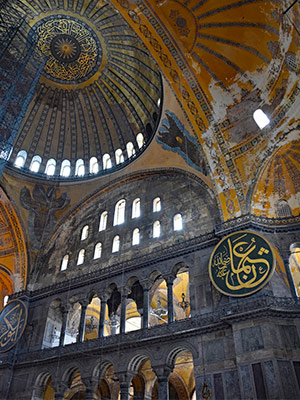
The exterior of the Hagia Sophia Basilica stands out because of its robust structure. Enormous buttresses stand out in its façade, as well as cascading domes towards the central dome. Both construction techniques had a sole purpose: support the weight of the enormous central dome, which did not have any type of column or support.
And if the stucco exterior is impressive because of its size and robust and solid structure, the interior enthrals visitors because of its elegance and refinement: golden mosaics, polychrome marble, precious stone inlays and other marvels. It is truly impossible to summarise all its gems, so we will highlight the most interesting parts. You will have to explore the rest for yourself:
- Narthex: of the five entrances, this was the main one and it was used by the emperor himself. One of the basilica’s main mosaics is located here: the image of Christ blessing Leo VI.
- Nave: the famous dome is located in the vast nave of the Hagia Sophia, with a height of 55.6 metres and a diameter of 31 metres, resting on a 40-window arcade. There you can also see the semi-domes which grow in size and height until reaching the central one. Golden medallions with verses of the Quran hanging from the ceilings, fine mosaics decorating the area and an alabaster urn for the ablutions stand out together with the mihrab.
- Upper gallery: the arcaded and vaulted gallery was where the empress and her courtiers followed the religious acts. You will see that the vault dome is slightly inclined because of the earthquakes. The galleries surround the nave, where you can admire the luxury of those who listened to the religious ceremonies from above: mosaics, polychrome marble… and even paintings from the Vikings, who did not hesitate to leave their mark during their visits to the temple.
- Mosaics and doors: the Hagia Sophia has several marvellous entrances which already announce that something big is concealed inside. The Marble Door, to the south, displays plant and geometrical motifs; the Emperor’s Door, which is around seven metres, is probably part of the original basilica; and the Bronze Door is from the 9th century.
Moreover, the basilica has around ten sets of mosaics. The mosaic on the Imperial Door, one of the most famous, shows Jesus blessing an emperor, probably Leo IV the Wise. All the mosaics, with golden tones, display many symbolic messages, from the inscriptions to the colours used. The main colour used, i.e. gold, covers the Hagia Sophia’s walls like the sun’s reflection and, therefore, a divine reflection.
- The Islamic shrines: the gardens of the old basilica were chosen by the various sultans for their mausoleums. You can access them from outside the temple, on the street leading to Topkaki Palace (internal link), and this is a must: inside you will find high quality artworks and tombs devoted to somewhat “transgressor” emperors such as Ibrahim the Mad, who was confined as a child by his brother in a harem under strict surveillance when the latter governed. His four other brothers did not have the same luck: they were executed.
Curiosities, tips and interesting details
The Hagia Sophia Basilica has been shrouded in mystery many times, both in the ancient and modern world. Authors such as Dan Brown have built a fantasy around this theme. Here are some of the most curious ones.
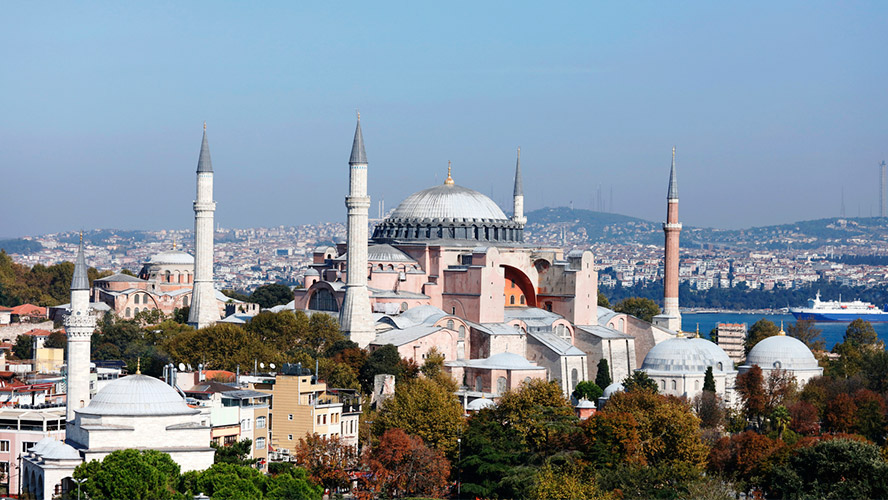
- The Hagia Sophia Basilica keeps objects which are said to have miraculous or healing properties. For example, the well beneath the central dome is believed to cure illnesses.
- Another mystery is its marble column since it is always moist, regardless of when you visit the temple. In the past, the faithful would make a hole in its structure and stick their fingers in and make a wish in contact with the holy water. That was why it was shielded with bronze afterwards.
- Nevertheless, the main enigma of the Hagia Sophia is its subsoil. Constantinople had many subterranean cisterns which collected water and supplied it to the city, for example, during a siege. Yerebatan is one of the most famous, by Emperor Justinian I, which measures no less than 1,000 square metres and is supported by up to 336 marble columns. And at last in the 21st century, the excavations began to discover the mysteries of the Hagia Sophia subsoil. The rumours were true: its tanks or cisterns were so big that they connected Topkapi Palace with Tefkur Palace.
Activities and tours in the Hagia Sophia
Between May and September, a nocturnal sound and light show is held outside the Blue Mosque and the Hagia Sophia Basilica. It starts around 9 p.m. around Sultanahmet Square and it tends to be carried out every day in a different language, so the advice is to get information beforehand at a tourist office.




































































